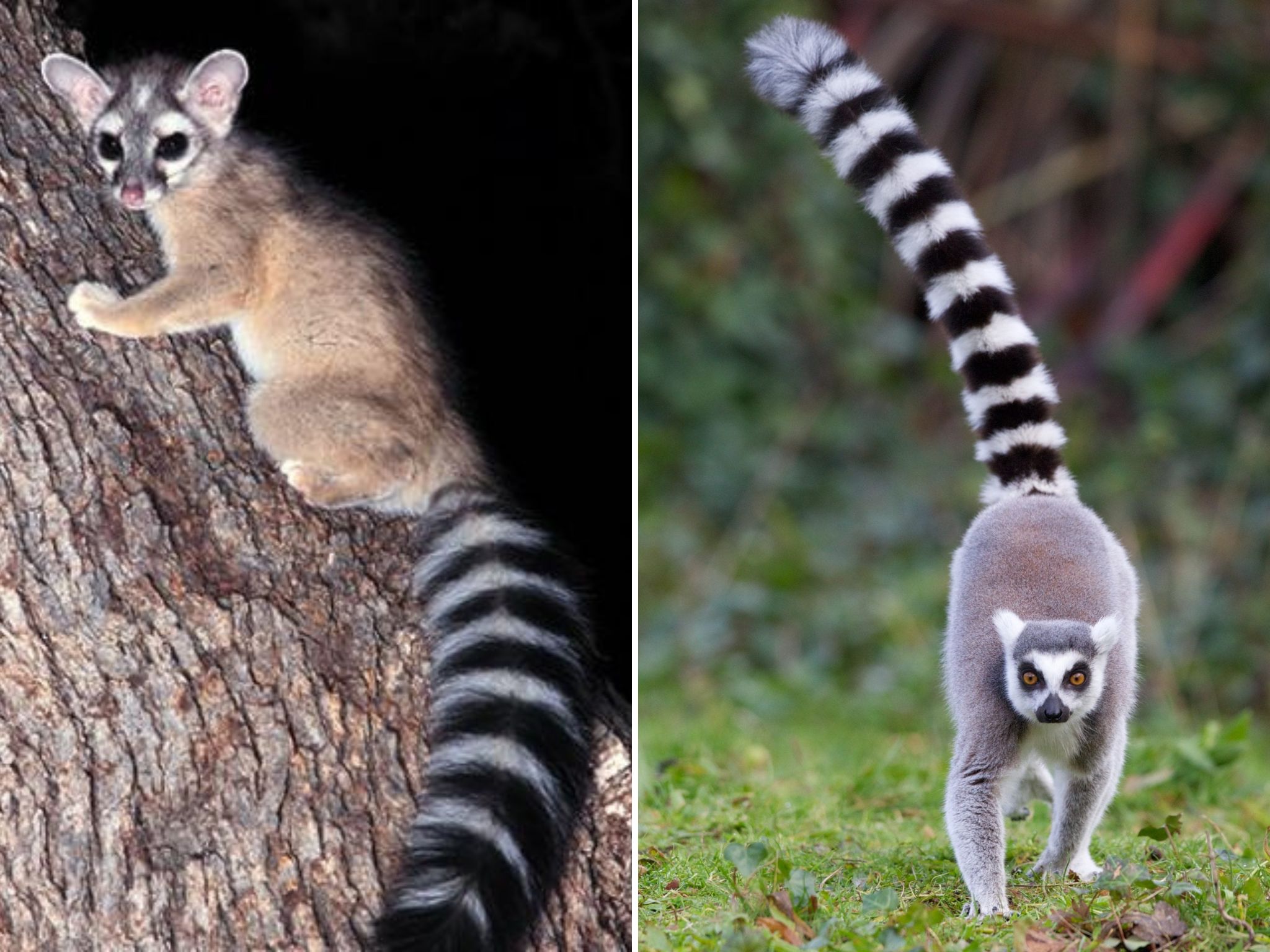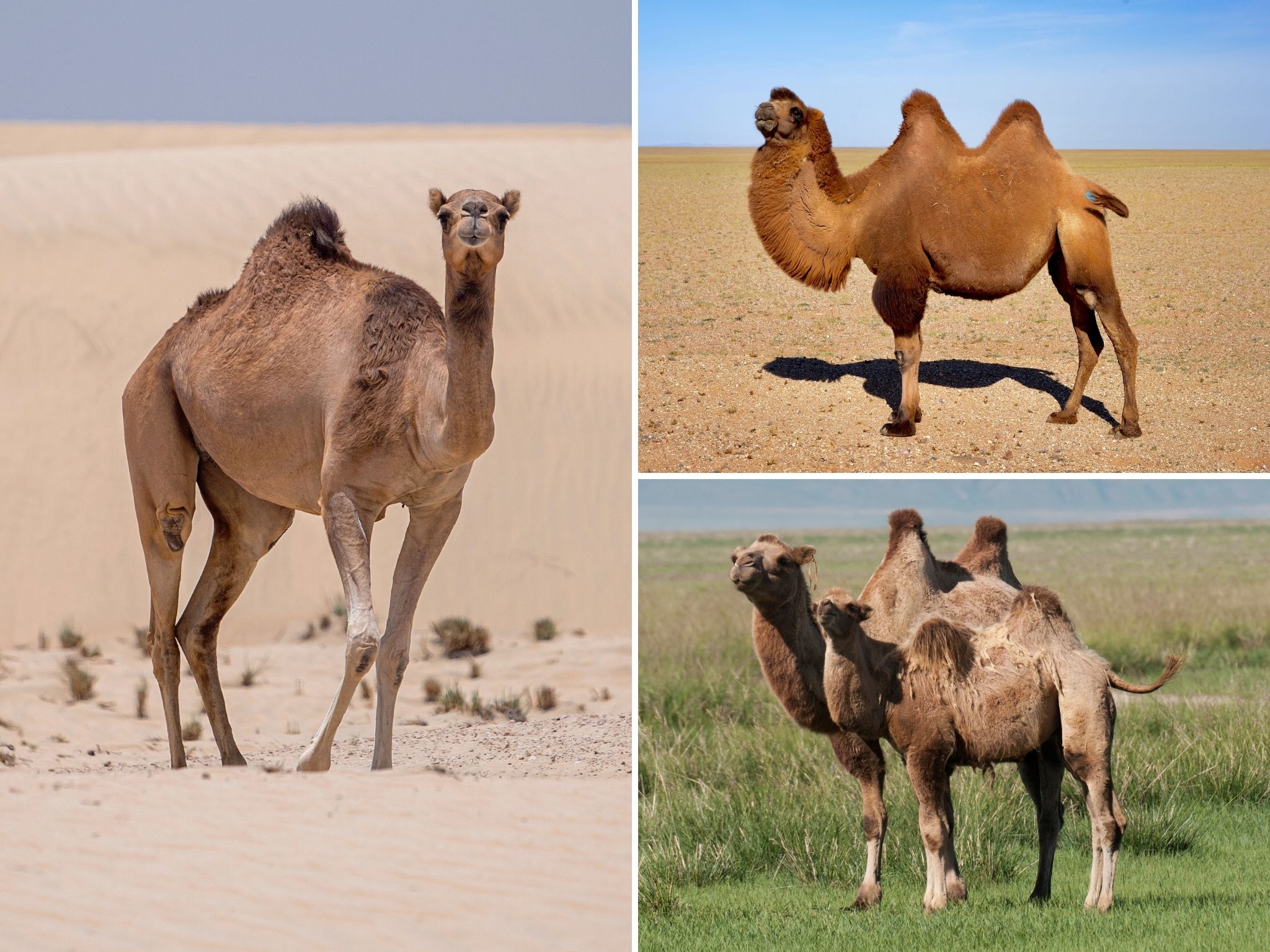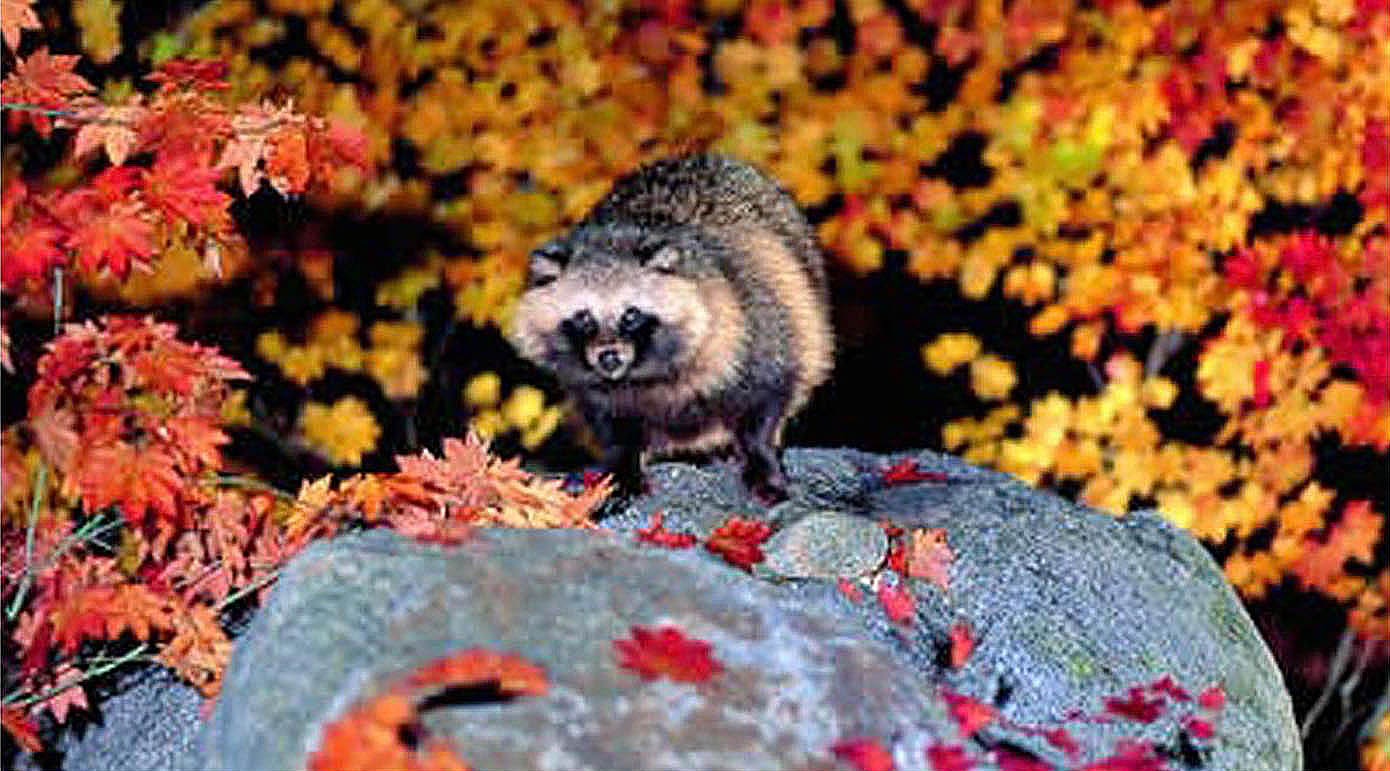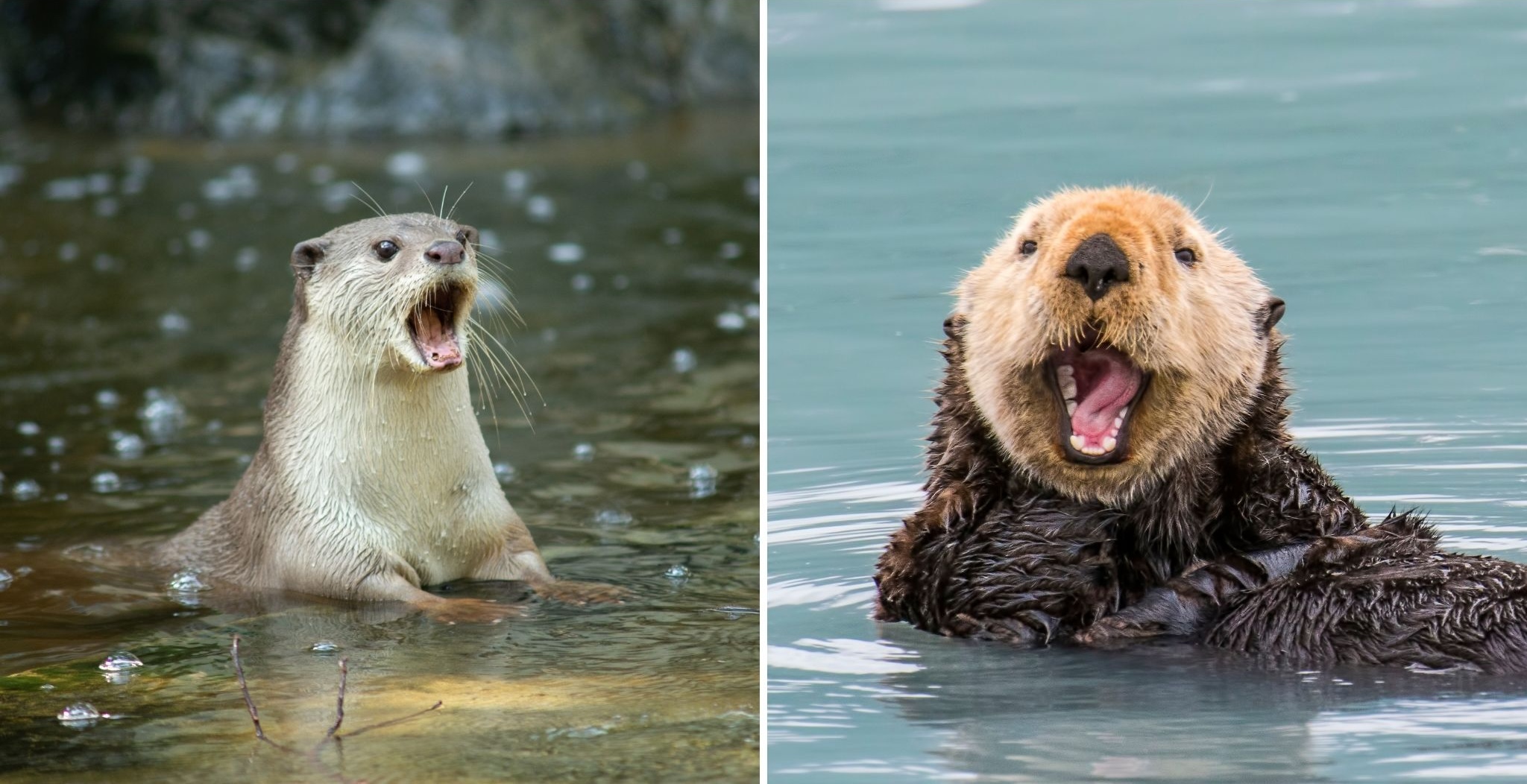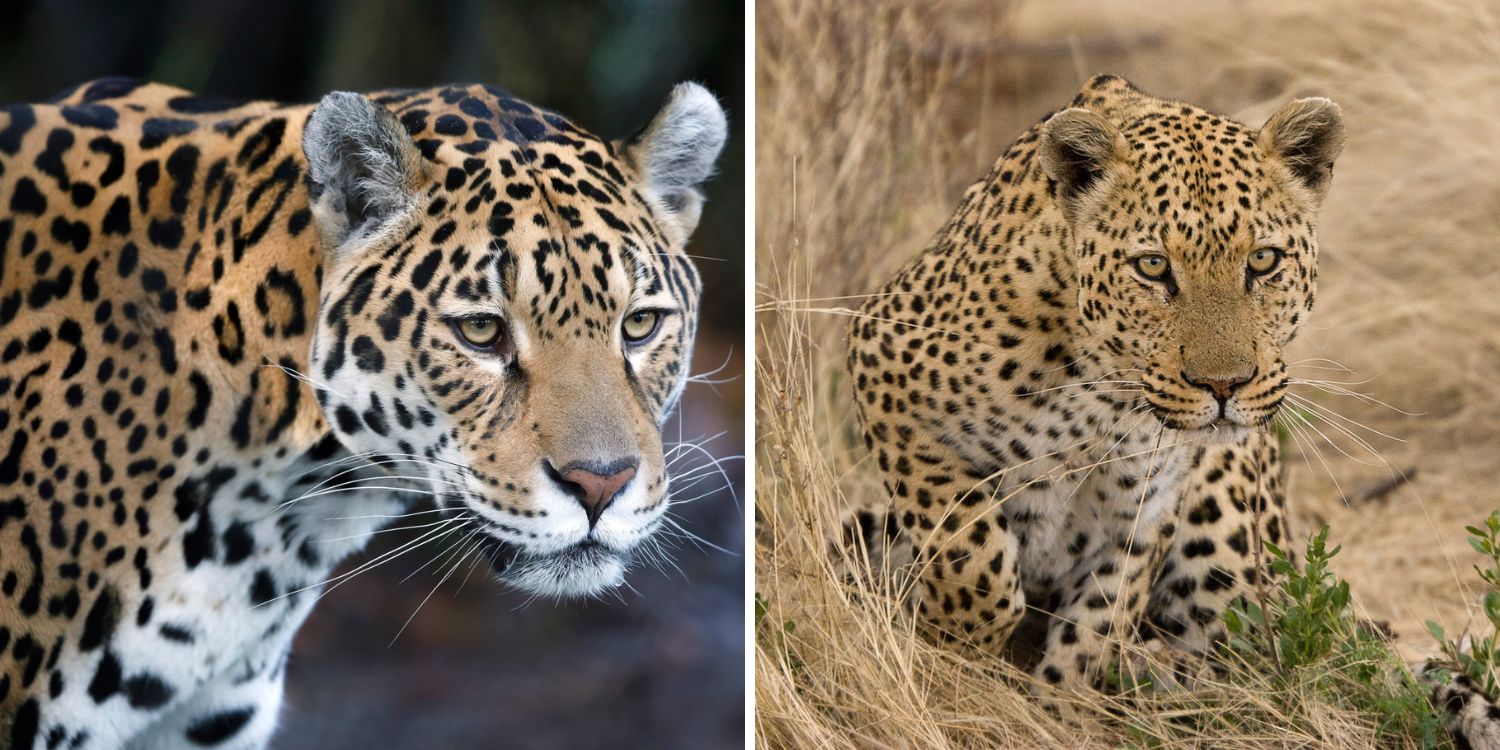
Both jaguars and leopards are magnificent spotted felines that reign supreme in their respective habitats. However, despite their similar appearances, they exhibit distinct features, behaviors, and roles within their ecosystems. Let’s delve into the key differences between these remarkable creatures:
Size and Build:
- Jaguars (Panthera onca): Larger and more robust, with a stockier build, powerful jaws, and a blocky head. They can weigh up to 250 pounds, making them the third-largest big cat in the world after tigers and lions.
- Leopards (Panthera pardus): Smaller and more slender, with a leaner build, agile movements, and a rounded head. They weigh up to 175 pounds, placing them among the smallest of the cats considered “big cats.“ (What is a “big cat” anyway?)
Habitat and Range:
- Jaguars: Found exclusively in Central and South America, roaming the dense rainforests of the Amazon basin and other forested areas. They are the biggest cats native to the Americas.
- Leopards: Found across a wider range in Africa and parts of Asia, adapting to diverse habitats including savannas, forests, mountains, and even rainforests.

Spots and Camouflage:
- Jaguars: Larger, rosettes with distinct central spots against a yellowish-tan coat. These rosettes offer effective camouflage in the dappled sunlight and vegetation of their rainforest habitat.
- Leopards: Smaller, solid rosettes without central spots against a golden-brown coat. This camouflage helps them blend in with the grasslands and woodlands where they primarily hunt.
Hunting Techniques and Diet:
- Jaguars: Powerful hunters known for their ambush tactics. They utilize their strong jaws to crush the skulls of their prey, which often includes larger animals like caimans and tapirs. They are also skilled swimmers and adept at hunting fish.
- Leopards: Agile climbers known for their stalking and pouncing techniques. They prey on smaller mammals like antelope and gazelles, and their flexibility allows them to hunt in trees and rocky areas.

Ecological Role:
- Jaguars: Play a crucial role as apex predators in their ecosystems, helping to regulate prey populations and maintain balance. They also contribute to seed dispersal through their feces.
- Leopards: Similarly, act as important predators in their habitats, controlling prey populations and maintaining ecological balance. However, their smaller size (relative to lions) and diverse feeding habits contribute differently to the dynamics of their respective ecosystems.
Conservation Status:
- Jaguars: Classified as Near Threatened on the IUCN Red List due to habitat loss, hunting, and conflicts with humans. Conservation efforts are crucial to ensuring their future survival.
- Leopards: Classified as Vulnerable on the IUCN Red List due to similar threats. They face additional challenges such as illegal wildlife trade for their fur and body parts.
Conclusion:
While both jaguars and leopards share certain similarities, their unique characteristics, behavioral adaptations, and ecological roles highlight their distinctiveness. Recognizing these differences strengthens our understanding and appreciation for these remarkable creatures and underscores the importance of conservation efforts to ensure their continued existence in their respective habitats.
Keep in mind these are only two of the spotted cats. There are also cheetahs, snow leopards, amur leopards, and all the smaller cat species with spotted coats.

